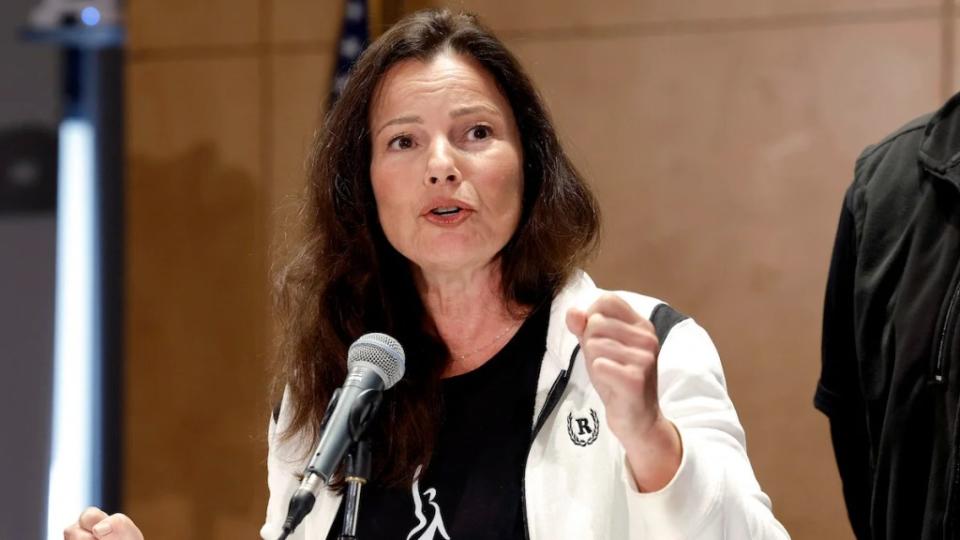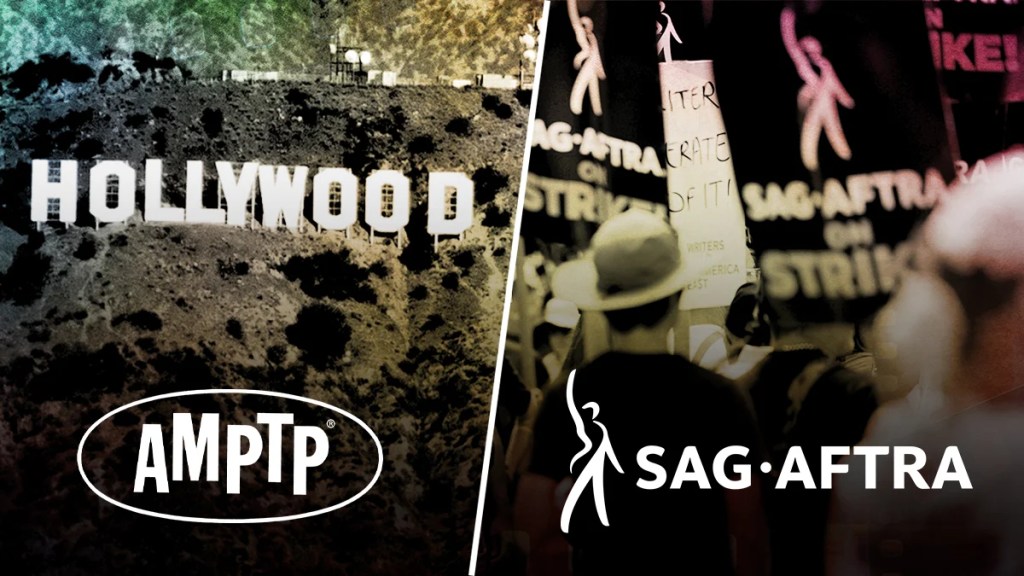Almost two weeks after breaking off talks with SAG-AFTRA on a new contract, Hollywood studios and the Alliance of Motion Picture and Television Producers have once again invited the actors guild to the negotiating table, with talks resuming on Tuesday at the guild’s Los Angeles headquarters.
Two insiders with knowledge of the talks told TheWrap that the meeting, which was announced jointly on Saturday, came after a call between Walt Disney Co CEO Bob Iger and SAG-AFTRA president . The actors guild decided to adjourn its online annual convention this past weekend early to allow Drescher, national executive director Duncan Crabtree-Ireland and their negotiating committee to prepare.
While studio insiders say there’s always been urgency to end the strikes that have shut down Hollywood since May — the actors went on strike on July 14 — the next few days will determine whether the stoppage will do further damage to the 2024 production schedules for film and TV, as well as awards campaigns for films coming this winter.
A big domino fell on Monday when Paramount announced that the eighth “Mission: Impossible” film, which was in the midst of filming when the actors went on strike, will be delayed from a June 2024 release date to May 2025. Insiders at Paramount confirmed that the strike was the reason for the delay, as the studio determined that it wouldn’t have enough time to complete shooting and postproduction on the franchise action film in time for a release next summer.
A handful of other 2024 tentpole films that paused shooting, such as Disney/Marvel Studios’ “Deadpool 3,” are also facing crunch time when it comes to meeting their current release dates.
In the short term, there are also films set for release in November and December like Sony/Apple’s “Napoleon,” Netflix’s “Maestro,” Warner Bros.’ “The Color Purple” and Searchlight’s “Poor Things” that need their actors back out on the media circuit for promotional work to increase their chances of box office and awards success. On the TV side, one insider said it would be “really hard, if not impossible” to resume production and salvage the 2023-24 TV season if a deal isn’t secured by the first week of November.
Such deadlines aren’t a concern for SAG-AFTRA, which is focused on securing a deal that stems the tide against the increasing financial instability faced by working-class actors and secures protections for actors against artificial intelligence being used to recreate their likeness and performance without consent and proper compensation.
In a memo to members sent this past Thursday prior to the announcement of resumed talks, SAG-AFTRA pushed back against claims made by the AMPTP in its statement announcing an indefinite pause in talks on Oct. 11 that the guild’s proposed revenue sharing structure for streaming services was financially unsustainable.
The memo observed that the guild had made changes to its proposal in hopes of finding a compromise, “tailoring it to address their (the studios’) concerns,” it read. The studio CEOs did not agree, saying that the guild had introduced a last-minute pivot to demand a $1/subscriber fee – which would go to the guilds – and threatened renewed energy on the picket lines if they didn’t get it.

Publicly, the two sides disputed the size of the proposed revenue sharing package. The AMPTP claimed that the guild sought a levy of $1 per streaming subscriber in its package, while SAG-AFTRA claimed that the proposal’s cost averaged 57 cents per subscriber. The AMPTP claimed that the overall size of SAG-AFTRA’s proposed contract was $800 million, while the guild put its cost at $480 million.
Finding an agreement on streaming compensation will be the toughest but most critical step to securing a deal. The AMPTP is pushing for SAG-AFTRA to accept a viewership bonus structure similar to the one agreed to by the Writers Guild of America back in September, which dictated that writers credited with a movie or TV episode viewed by 20% of a streaming service’s subscribers in the first 90 days would receive additional cash.
Insiders with knowledge of the studio side of the talks said that there was confidence among the studio CEOs that this bonus structure would satisfy SAG-AFTRA’s demand for increased streaming compensation, and were surprised when there was pushback from the guild.
“That issue that we got resolved with the writers was not only accepted in the deal, but ratified by a 99% vote of the writers’ guild,” Netflix c0-CEO Ted Sarandos said at the Bloomberg Screentime conference last week. “I know that all these guilds are not created equal and they all have different needs and more bespoke needs, but like I said, that is one that worked that rewarded success, which we agreed with.”
SAG-AFTRA, however, has long said that it has been searching for significant changes to how actors are compensated for their work on streaming in an era where linear TV residuals are rapidly eroding and many actors struggle with rising living costs and inflation.
Months before the strike began, guild president Fran Drescher told TheWrap that the guild was seeking a new contract that reflected how streaming has become the core of the entertainment industry and how millions primarily view actors’ work.
“We can’t keep building on a contract that was made in the 1980s,” Drescher said in May. “We need a contract that better reflects the business model that we’re in right now.”
Guild insiders told TheWrap last week that SAG-AFTRA is searching for a compensation structure that addresses the full range of performers represented by the guild, and said that the bonus structure proposed by the AMPTP was too limited in its scope.
When talks began with the AMPTP, the guild pushed for a 19% compound rate increase in minimums, including 11% in the first year of the contract.
Insiders say in its proposals AMPTP is sticking to the 13% compound rate increase — including 5% in the first year — that was agreed to by the Directors Guild and Writers Guild.
Both the WGA and SAG-AFTRA have pushed back against the pattern bargaining strategy that the studios have used for decades in contract talks. And SAG-AFTRA has said that it is not beholden to any terms negotiated with other unions.
The post SAG-AFTRA Talks With Hollywood Studios Enter Their Critical Third Act appeared first on TheWrap.




